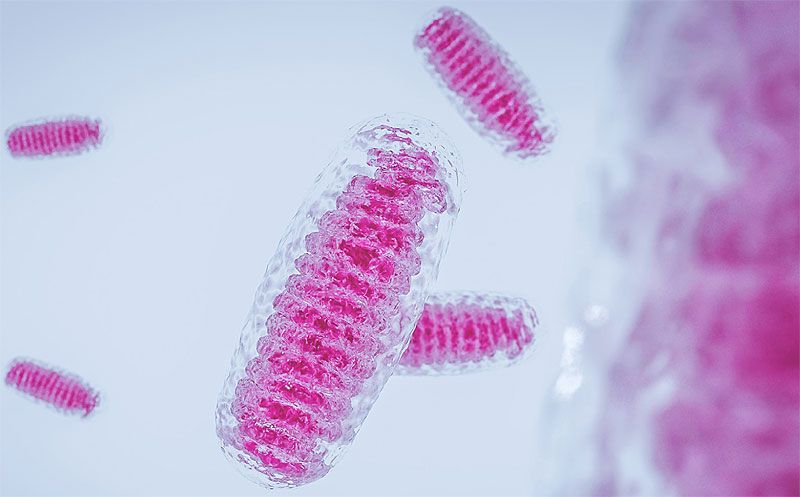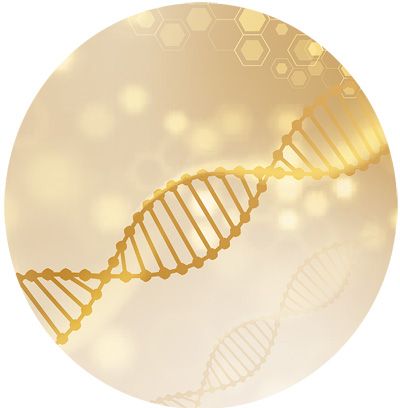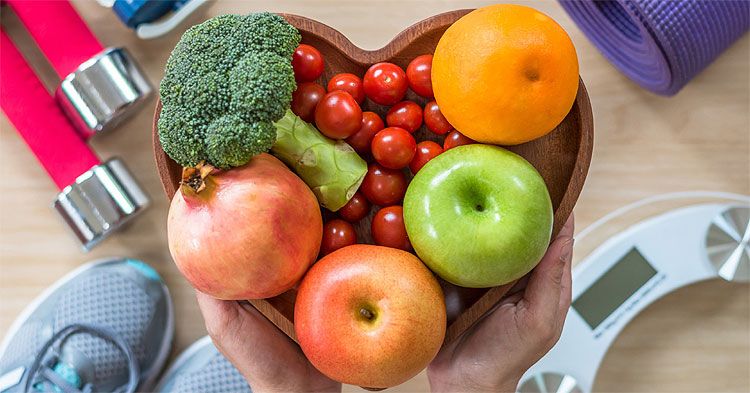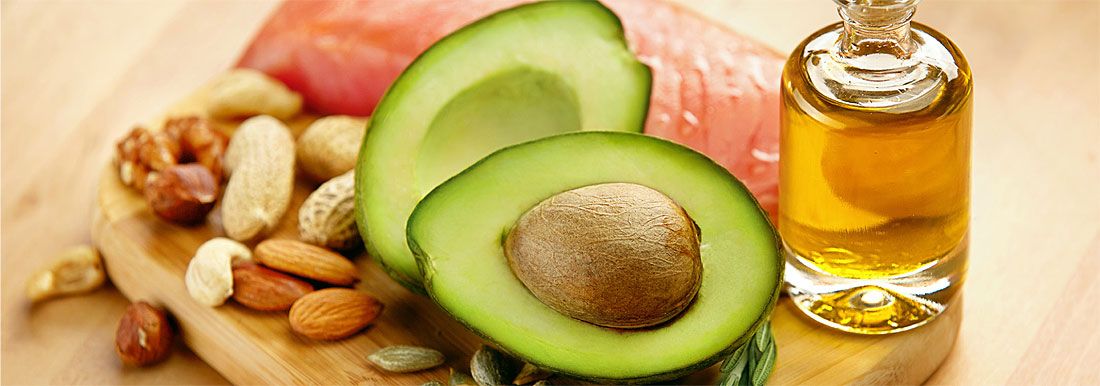

Safeguarding Your Body's Cellular Source Of Energy
Who doesn’t want more energy?
How many times have you had a hard time getting through your exercise routine . . . dragged your feet at work . . . or even put off things you love to do because you’re just not up to it?
Energy is everything when it comes to living life to its fullest.
Finding natural, healthy ways to build your energy reserves – can mean everything when it comes to making life good.
To do this, you need to understand HOW your body makes energy – and uses it. With this information you can find better ways to manage your energy levels and live a life full of vitality and verve.
And the essential tool for doing this lives deep inside of almost every cell of your body . . .
Your Cells’ Powerhouses
Almost every cell in your body houses special organelles called the mitochondria. Mitochondria are your cells’ power stations.
They make all cellular activity possible. Consequently they make every activity in your body possible.
Without them, your body cannot access the energy from the food you eat.
See, when your body takes in food, it breaks it down through digestion to the molecular level.
Some of these molecules- like fats and sugars – are packed with energy.
But just like we can’t use crude oil to turn on the lights in our house, we need to convert these fuels into energy our body can use.
Like power plants that turn oil into electricity, the mitochondria turn these energy-packed molecules into our body’s “electricity” – Adenosine Triphosphate or ATP.
And here’s the thing – your body cannot store ATP. So you desperately need your mitochondria to be there churning out this “electricity” on an ongoing basis so your cells can use it.
And these little powerhouses churn out a lot of it . . .
Every day, the average person produces their own body weight in ATP.1 That’s a lot of mitochondrial activity!
Cells that use a lot of energy – like muscle, liver, brain and fat cells – have lots of mitochondria. Sometimes thousands. The more mitochondria a cell has, the more fuel it can convert into energy for cell activities.
In fact, much of the ATP produced in the body is used by your brain – showing how critical energy-producing mitochondria are for brain function!2
But it’s not just the brain that needs these power sources to function . . .
Research Demonstrates Mitochondria Health Is Critical For Your Overall Health
 In 2013, Joseph Pizzorno, ND, Editor in Chief of the Journal of Integrative Medicine, urged health professionals to pay attention to the mitochondria. As he noted in his editorial, “Mitochondria – Fundamental To Life And Health”, mitochondrial health is pivotal to all health3.
In 2013, Joseph Pizzorno, ND, Editor in Chief of the Journal of Integrative Medicine, urged health professionals to pay attention to the mitochondria. As he noted in his editorial, “Mitochondria – Fundamental To Life And Health”, mitochondrial health is pivotal to all health3.
And he’s not alone. Over the past few decades there’s been a flurry of research on this tiny organelle, as experts discover its importance . .
-
In your brain’s neurons, for example, it seems mitochondria migrate to certain spots in order to stabilize the signals your neurotransmitters are sending out.
Research is revealing how mitochondria health is integrally related to how strong your heart is, how healthy your blood sugar metabolism is, how sturdy your bones are, even how fast your skin wrinkles or your hair turns grey.4
Because they are source of energy for all cellular activity, every organ is affected by these tiny organelles.
But it turns out, mitochondria’s influence on your health isn’t restricted to energy production . . .
Mitochondria Influence You Genetically!
As you probably know, every cell houses a set of genes in their nucleus. These genes are what we refer to when we talk about our genetics. But these aren’t the only set of genes in your cells.
 Mitochondria have their own distinct set of genes that are different from the genes in each cells’ nucleus.
Mitochondria have their own distinct set of genes that are different from the genes in each cells’ nucleus.
How is this possible?
This goes back to the ancient story of how this special organelle came to be in our cells . . .
Mitochondria were once independent organisms. Then about 1.5 billion years ago, they took up residence inside the one-celled organism that evolved into the cells in animals and plants.
Millenniums later the mitochondria are now an integral part of our cells. But they still retain their own genes.
Until recently, scientists ignored these genes in understanding how genetics impacts health. But now that’s changing . .
-
Preliminary research indicates our mitochondrial DNA interacts with our cells’ DNA to determine how our metabolism works. In other words, your mitochondrial DNA can help determine your susceptibility to weight gain.5
-
When cells are starved or stressed, the mitochondria DNA generates a special protein that migrates over to the cell’s DNA. There, this mitochondrial protein takes over the cell’s DNA, turning on a defensive system.6
-
Some research even suggests that the mitochondria DNA has been pivotal for human evolution, providing genetic material that has helped groups survive in tough new environments.7
How To Take Care Of Your Mitochondria For More Energy And Excellent Health
How are these organelles harmed?
-
Well, some of it is simply linked to getting older. As we age, our mitochondria become more vulnerable. It’s one of the big reasons, we start to feel less energetic in our later decades. A great way to catch your reader's attention is to tell a story. Everything you consider writing can be told as a story.
Just like the engine in a car, mitochondria are the site of powerful combustion. In the mitochondria, fuel mixes with oxygen to release energy.
To safeguard itself, the mitochondria enlist the protection of antioxidants.
So one of the first things you can do to support your mitochondria is to make sure you supply them with antioxidants . . .
-
Eat antioxidant-rich foods like dark-colored berries, bright peppers, leafy greens, broccoli and tea.
-
Supplement with antioxidants. Sun Chlorella may support cellular health.
 You can also make changes to your daily routine that help your mitochondria function optimally:
You can also make changes to your daily routine that help your mitochondria function optimally:
-
Get enough deep sleep. When you are sleeping, your mitochondria gears down to a slower rate of power production, reducing its exposure to free radicals.9
-
Eat less. Research indicates that one of the reasons eating less contributes to longer living is the reduced strain on the mitochondria.10 One of the longest-living groups of people – the Okinawan Japanese - follow a tradition where during meals they stop eating once they are 80% full.
-
Try intermittent fasting. You can get some of the benefits of fasting by limiting your meals to a 12-hour window in the day. For example, eat only from 9 in the morning to 9 at night. This lets your body rest from digestion and eating the other 12 hours, giving your mitochondria a break.11
-
Exercise regularly, particularly using high intensity interval training (HIIT). HIIT means you exercise intensely for short spurts (like 10 minutes) and then rest in between for a total of 30 minutes total activity. This kind of exercise seems to boost your cells’ production of certain proteins your mitochondria need, staving off aging at the cellular level.12
Take Care Of Your Mitochondria And They Will Take Care Of You!
All of these simple lifestyle shifts can help keep your mitochondria working well.
When your mitochondria are working well, your body works well . . .
Your heart pumps blood around your body reliably . . . your liver processes fats and helps your body eliminate toxins without a hitch . . . your muscles flex and power you up when you need them . . . your brain fires on all cylinders keeping you sharp . . .
And you – the sum of all these parts right down to their tiny mitochondria power plants – feel full of life. Ready to take on every minute of it with gusto!
5 Surprising Energizing Foods
 In basic terms, all food is energy. It’s the fuel your body uses to get moving.
In basic terms, all food is energy. It’s the fuel your body uses to get moving.
But some foods are particularly strategic when it comes to helping your body make energy, access it and distribute it.
Add some of these revitalizing nibbles to your meals, and you’ll feel a difference. To make it even better, try sprinkling in some Sun Chlorella Powder to double the energy effect!
Beets
Beet juice has become all the rage among athletes – and for good reason. Research indicates beet juice can help increase performance noticeably.13 14
How does it do this?
Beets boost your body’s production of nitric oxide, essential for good circulation. The better your blood circulates, the better your cells can access fuel and oxygen, allowing for a higher rate of cell activity.15
Watermelon
Nothing beats watermelon’s refreshing juiciness on a hot summer day. And certainly, the water content alone can wake your body up. But there’s more to this luscious melon . . .
Watermelon contains the antioxidant lycopene.16 This antioxidant packs a powerful punch specifically when it comes to supporting the mitochondria in your brain and heart cells.17 18 19
It also contains a good amount of the amino acid, citrulline. Citrulline along with its derivative, arginine, can help boost circulation by helping with the production of nitric oxide.
Beans
A bowl of beans can fill you up – and power you up.
Stocked with protein and complex carbs, beans give you the macronutrients your body needs to move. But they go further. Beans’ rich supply of B vitamins help your body convert glucose into energy so you can use these macronutrients to their max!20
Avocado
Avocado’s rich creaminess makes any breakfast taste good – from smoothies to eggs on toast. But it also can make you feel good. Your body can use its healthy fat to make energy. And when you add avocado’s B vitamins to the mix, you’ve got the makings for a zippy day.
Cashews
Crunching on cashews when you need a pick-me-up is a good choice. They give you a quick dose of proteins and healthy fats at a moment’s notice. But that’s not all . . . Packed with magnesium and a nice bit of copper, these curvy nuts can help your body access its energy stores effectively.
“Chlorella Has Helped My Life”
Customer Profile: Richard Katsumata
“I’ve been taking chlorella for quite a while - almost 35 years,” says Richard Katsumata, smiling. His eyes are bright, his face glows with health.
Richard started chlorella while he was in college. With all the work and stress, his health declined. Concerned, his mother recommended he try chlorella. Her pharmacist had told her about it.
 “She said there is a food supplement – not a medicine – a food supplement. With no side effects. That chlorella will help you. No medication. No chemicals.”
“She said there is a food supplement – not a medicine – a food supplement. With no side effects. That chlorella will help you. No medication. No chemicals.”
“So I said, okay, let’s try it.”
Chlorella Helps Richard Enjoy His Busy Life
Since then he hasn’t stopped. It made such a difference in his health.
“I take it in the morning before I go to work. And before the end of the day, before I go to bed.”
As Richard explains, he usually takes about 27 tablets every day. But if he has an especially demanding time at work or otherwise, he’ll up it.
Sometimes when he has a full schedule of meetings and doesn’t have time to eat lunch, he takes some chlorella instead. When 5 o’clock rolls around, Richard says he feels fine.
At age 67, Richard works hard. But he also plays hard.
He loves to work around the house. He’s torn out walls, done all the stuccoing. He even redid all the plumbing. “It’s my hobby. I probably have more tools than a construction guy,” laughs Richard.
When he’s not working on his house, he loves to hike, go to the beach and ski. A long winter doesn’t dismay Richard. To him it means a few more weeks of skiing.
Richard says chlorella has enabled him to enjoy such an active life. “I sometimes hit it hard with the chlorella when there’s a demand on the body for higher energy. I go all the way to 50 tablets.”
He also emphasizes to take it regularly, reminding people that it’s not a medicine, it’s a supplement.
Chlorella has been a constant for his whole family. His mother has used it to support her health as well. And Richard also started giving it to his son when he was 3 years old.
He says chlorella helped his son enjoy a strong, supported digestion system. “At age 5 or 6 he can eat everything,” chuckles Richard. “Everything! not a problem.”
Richard loves what chlorella has done to enrich his life: “It helps my life. It helps my health – that’s the most important part of life. I stay healthy and I’m able to perform my work.”

1 Pizzorno J. (2014) Mitochondria – fundamental to life and health. Integrative Medicine.Vol. 13 (2): 8-15
2 Pizzorno J. (2014)
3 Pizzorno J. (2014)
4 Singh B et al. Reversing wrinkled skin and hair loss in mice by restoring mitochondrial function. Cell Death & Disease, 2018; 9 (7)
5 Dunham-Snary KJ et al. Mitochondrial – nuclear genetic interaction modulates whole body metabolism, adiposity and gene expression in vivo. EBioMedicine, 2018; 36: 316
6 Abuita et al (2018)
7 Children's Hospital of Philadelphia. "Tiny mitochondria play outsized role in human evolution and disease." ScienceDaily. ScienceDaily, 24 September 2015. <www.sciencedaily.com/releases/2015/09/150924124450.htm>.
8 Qian W et al. Chemoptogenetic damage to mitochondria causes rapid telomere dysfunction. Proceedings of the National Academy of Sciences, 2019; 201910574
9 Rodrigues NR et al. Short-term sleep deprivation with exposure to nocturnal light alters mitochondrial bioenergetics in Drosophila. Free Radic Biol Med. 2018;120:395-406.
10 Hepple RT. Why Eating Less Keeps Mitochondria Working in Aged Skeletal Muscle. Exercise and Sport Sciences Reviews: January 2009. Vol 37(1): 23-28
11 Feldscher K. Harvard study shows how intermittent fasting and manipulating mitochondria networks may increase lifespan. November 11, 2017. Viewed 10/1/19 at https://news.harvard.edu/gazette/story/2017/11/intermittent-fasting-may-be-center-of-increasing-lifespan/
12 Robinson MM et al. Enhanced Protein Translation Underlies Improved Metabolic and Physical Adaptations to Different Exercise Training Modes in Young and Old Humans. Cell Metabolism, 2017; 25 (3): 581
13 Bailey SJ et al, Dietary nitrate supplementation reduces the O2 cost of low-intensity exercise and enhances tolerance to high-intensity exercise in humans. Journal of Applied Physiology 2009 107:4, 1144-1155
14 Murphy, Margaret et al. Whole Beetroot Consumption Acutely Improves Running Performance. Journal of the Academy of Nutrition and Dietetics, Volume 112, Issue 4, 548 - 552
15 Lundberg JO et al. Inorganic nitrate is a possible source for systemic generation of nitric oxide. Free Radical Biology and Medicine. Vol 37 (3).2004:395-400.
16 Watermelon beats tomato in lycopene stakes. Nutraingredients. June 4, 2002. Viewed 10/1/19 at https://www.nutraingredients.com/Article/2002/06/05/Watermelon-beats-tomatoes-in-lycopene-stakes
17 Yue R et al. Lycopene protects against hypoxia/reoxygenation-induced apoptosis by preventing mitochondrial dysfunction in primary neonatal mouse cardiomyocytes. PLoS One. 2012;7(11):e50778. doi:10.1371/journal.pone.0050778
18 Prakash A et al. Lycopene protects against memory impairment and mito-oxidative damage induced by colchicine in rats: An evidence of nitric oxide signaling. European Journal of Pharmacology. Vol 721 (1-3). 2013: 373-381.
19 Di Mascio P et al. Lycopene as the most efficient biological carotenoid singlet oxygen quencher. Archives of Biochemistry and Biophysics. Vol. 274 (2). 1989: 532-538.
20 Why is vitamin B complex important and where do I get it? Healthline. Viewed 10/1/19 at https://www.healthline.com/health/food-nutrition/vitamin-b-complex